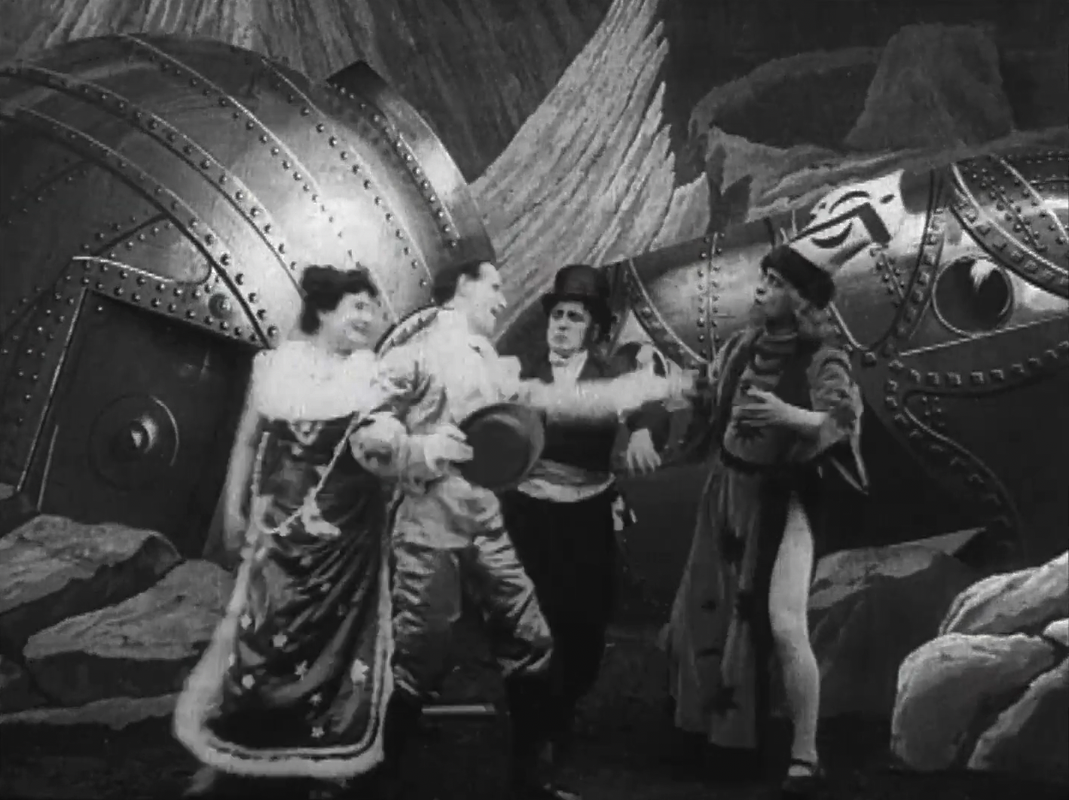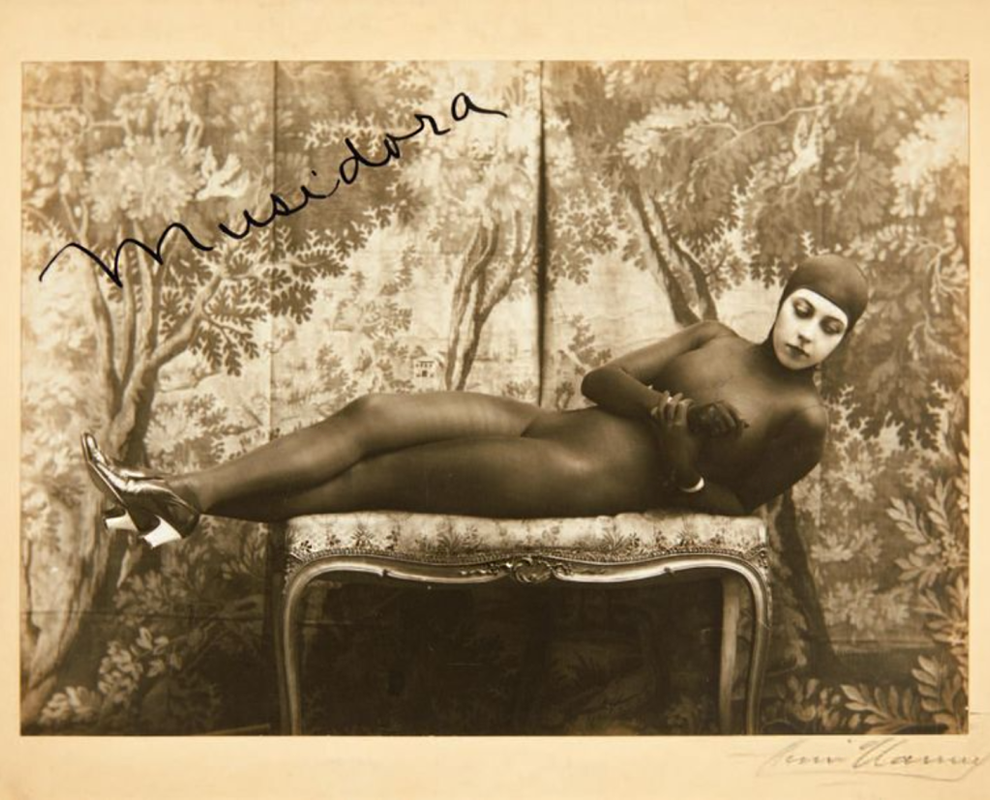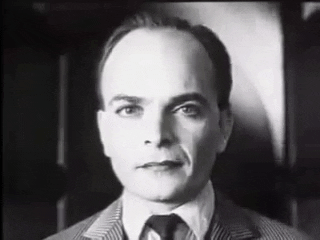“Laugh, my friends. Laugh with me, laugh for me, because I dream for you.”Le voyage dans la lune [A Trip to the Moon] (Georges Méliès, 1902)
Dec
19
Apollo 17
.gif)
A gif from the hand-coloured edition that is now in the Filmoteca de Catalunya. Poor Mister Moon has the adventures' rocket stuck in his eye. DPs: Théophile Michault & Lucien Tainguy.
The Moon (any moon) to commemorate the end of the final man-manned moon landing.
– Georges Méliès, 1937
In true Méliès style, a wild menagerie of showgirls and scientists meet on the Moon in this groundbreaking sci-fi spectacle.
1910s
The Automatic Motorist (Walter R. Booth, 1911)
Dec
17
Saturnalia
.jpg)
While on the ringed planet, they pick up a cop to save him from spear-wielding rascals, but he elopes with the planet's fairy. Look at those lovebirds on the rings of Saturn!
A planet with rings for Saturnalia
Two lovely newlyweds and their robot chauffeur take a trip to Saturn for their honeymoon, followed by a jolly ride under the sea. A remake of Booth's own The '?' Motorist from 1906.
Le avventure straordinarissime di Saturnino Farandola [The Extraordinary Adventures of Saturnino Farandola] (Marcel Perez + Luigi Maggi, 1913)
Dec
6
hot air balloons
.jpg)
A fantastic hot air balloon fight, with machine gunners perched on top of one of the buoyant giants (via). DP: Ottavio De Matteis.
A hot air balloon*
* the Bales 2025 Film Challenge for December has a few dateless themes. This is one of them.
“Now consummate the sacrifice in your throat of flame, o father and mother, o god and goddess, o father and mother, o father and son, o god and goddess! Voracious creator! Roaring ardent hunger…” Cabiria (Giovanni Pastrone, 1914)
Dec
5
.png)
The gigantic entrance to the Temple of Moloch in Carthage. Like the entrance to Luna Park Sydney, it's appearance is based on a hellmouth. DPs: Augusto Battagliotti, Eugenio Bava, Natale Chiusano, Segundo de Chomón, Carlo Franzeri & Giovanni Tomatis.
A temple*
The world's first epic film and the debut of – the later hugely popular – strongman Maciste.
* the Bales 2025 Film Challenge for December has a few dateless themes. This is one of them.
“Mars Daughter, You are fine. I am loving you and I should like very much to marry you.”Un matrimonio interplanetario [A Marriage in the Moon] (Enrico Novelli, 1910)
Sep
12
Луна 2 – 1959

Aldovin (director and author of La Colonia Lunare (1908) meets his lovely Martian fiancée halfway, on the Moon.
To commemorate the launch (not landing) of the Луна 2 aka the Second Soviet Cosmic Rocket on September 12, 1959, we present The Moon.
According to Wikipedia, Luna 2 was the first spacecraft to touch the surface of the Moon, and the first human-made object to make contact with another celestial body. Well, Enrico Novelli went there first…
– Aldovin, Terrestrial Astronomer (Aldovin's radiotelegraph to Mars), via
…and what an adventure he had! An Earth gentleman points his telescope at the red planet, only to spot a beautiful Martian princess. He promptly falls in love and lo and behold! it's mutual! That asks for an instantaneous wedding halfway, on the Moon, and nothing can stop them!
“It is vital to be photogenic from head to foot. After that you are allowed to display some measure of talent.”
Les Vampires [The Vampires or, The Arch Criminals of Paris] (Louis Feuillade, 1915/1916)
Aug
24
black

A signed promotional photograph of Irma Vep (Musidora) in her iconic black catsuit. DPs: Georges Guérin & Manichoux.
Black, in food or fashion*
– Musidora
Possibly the first, and definitely the most, iconic catsuit in cinema is worn by Musidora as Irma Vep in Les Vampires. Skintight and scandalous, Musidora's screen presence in the serial further cemented the popularity of the vamp and set the scene for many man-eaters to come.
* the Bales 2025 Film Challenge for August is not date-related but lists, for the most part, the colours of the rainbow.
“When we began to compare the typically American, typically European, and typically Russian films, we noticed that they were distinctly different from one another in their construction. We noticed that in a particular sequence of a Russian film there were, say, ten to fifteen splices, ten to fifteen different set-ups. In the European film there might be twenty to thirty such set-ups (one must not forget that this description pertains to the year 1916), while in the American film there would be from eighty, sometimes upward to a hundred, separate shots. The American films took first place in eliciting reactions from the audience; European films took second; and the Russian films, third. We became particularly intrigued by this, but in the beginning we did not understand it.” Эффект Кулешова [Kuleshov Effect] (Lev Kuleshov, 1918)
Aug
5

A closeup of a man, followed by a medium shot of a child in a coffin, then back to the man. Can you see how his expression changes? (via). DP: to be determined.
Celebrating Dia de Los Muertos [on November 1 and 2, of course]: a cemetery, coffin, or dead person*
– Lev Kuleshov, The Principles of Montage, from The Practice of Film Direction (pp. 183-195) (source)
Director Lev Kuleshov explains what happens when a scene is followed by a reaction shot. Depending on the preceding image, the viewer projects an emotion onto the performer's facial expression. In his most famous montage, made up of existing footage – because property is theft, we see matinee idol Ivan Mosjoukine “react” to a bowl of soup, a little girl in a coffin, and a woman sprawled out on a divan.
* the Bales 2025 Film Challenge for August is not date-related but lists, for the most part, the colours of the rainbow.
L'eclisse del 17 aprile [An Eclipse of the Sun] (1912)
Apr
17
1912

Scientists in impeccable suits observing the 1912 solar eclipse. The colour used for tinting this scene, a turquoise, indicates moonlight/dusk. Image source: Cineteca di Bologna (via).
कालिया मर्दन [Kaliya Mardan / The Childhood of Krishna] (Dhundiraj Govind Phalke, 1919)
Apr
1
April Fools' Day

Shri Krishna (Mandakini Phalke, the director's seven-year old daughter), playing his flute with a twinkle in his eye. DP: Dhundiraj Govind Phalke.
A fool or jokester for April Fools' Day
As a child, Shri Krishna, the eighth avatar of Lord Vishnu, was a prankster. The Lord and his childhood friends would steal makhan and, if there was too much to eat all at once, would share it with the monkeys.
Kaliya Mardan is one of the handful films from India's early cinematic output that has survived. Do check your attic
“Bonsoir. Je m'appelle Rosalie!” Rosalie et son phonographe [Rosalie and Her Phonograph] (Romeo Bosetti, 1911)
Mar
28
Something-on-a-Stick Day

Rosalie (Sarah Duhamel) dances to her new phonograph. Duhamel makes eye contact with the viewer throughout the film, and even formally introduces herself during the intro.
A laugh out loud scene for Something on a Stick Day (USA)
Rosalie (the wonderful Sarah Duhamel) buys herself a phonograph and is delighted by the wonders it brings. Quick, the whole household should know!
Not only the obvious moments (no spoilers here), but the small, seemingly improvised bits is what makes Rosalie stand out above American productions of the time – with the exception of Roscoe Arbuckle's; his water bucket pun in His Wife's Mistakes (1916) still has me in stitches.
Duhamel makes great use of her physique, and doesn't shy away from looking inelegant, boorish even. Her hips are for pushing things and men out of her way, and her mighty paws easily toss any unwieldy piece of furniture out of the window.
Like Rosalie's irresistible gusto and her delightful ditties, the combination of Duhamel's physical comedy and (former #vaudeville-ian) Bosetti's Italian-flavoured slapstick, plus some of the best stop-motion trickery I've ever seen, is simply magical.